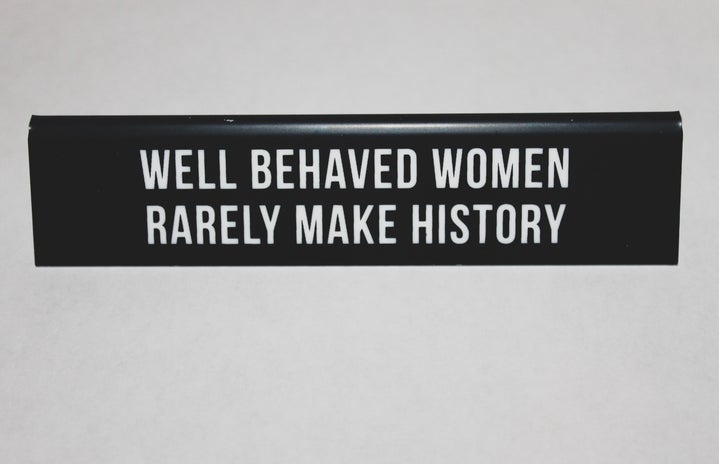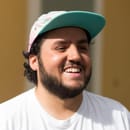With the internet being so easy to access, it has become easier for independent artists to find an audience and let their work be known. As a result, a variety of movements, collectives and scenes have found a way to pave their way. The independent art scene in Puerto Rico is no different. Recently, a variety of artists from a variety of disciplines have found platforms that have made it easier for them to share their work. In addition, small businesses such as Electroshock in Santurce and Río Piedras, bars like Off The Wall in Mayagüez, and libraries like La Casita Books and Gifts in Aguadilla have provided up-and-coming artists a space for them to display their talents. “Puerto Rican Women Killing It in the Independent Art Scene” are interviews which provide a glimpse at a few of the women who are making their way in said movement. Though the artists were asked similar questions, some were asked queries focused specifically on their work.
Bárbara Pérez is an artisan in Taller Kenuati who does maracas for bomba as well as artisanal jewelry. The following interview was conducted online.
How did you get into being an artisan?
I’ve been an artisan since I was fourteen years old. At first it started as part of searching for a hobby/job when I was young and looking for an income. My father and aunt supported me from the beginning and helped develop my desire of working in the field by getting me some of the equipment and taking me to the mountains to collect materials. Ever since then my work has evolved because I have decided to work with other items like bamboo, seeds, coconut, and other wood materials from the island. The similarity in all of these is that I practiced engraving in all of them; it is what I’ve practiced to this day.
(Pérez with some of her work)
I’ve seen your work is highly influenced by your community. How did this happen?
When I started as an artisan I never had any formal education in the arts. I didn’t even had a person there to tell me “esta máquina se usa así” (this machine works like this). I learned everything on my own by watching other artisans in artisan festivals I was taken to by family. I would always stay behind in artisans’ tents looking at how they did their work because I always fascinated by it. So when I started studying art in the RUM, I found out how many of my peers had vast knowledge on the themes and techniques in art. It was frustrating. Eventually, I took the Puerto Rican Art History course taught by Prof. Sandra Aponte, and in that moment, I clicked. I started to know the work of a variety of Puerto Rican engravers who because of their work at the time (the 1950s, at the start of DivEdCo) were considered popular art and I could see myself in them because there was a particular interest in documenting the reality of Puerto Rican culture and its different forms. This was what I wanted to do as an artist; work that wasn’t misunderstood in my reality as a woman who was raised in Barrio La Quinta in Mayagüez, who had to study her entire life in the public school system, and couldn’t study art until she arrived to college. That is what I want to present with my work and I want it to be accessible for people like me. My art has always been influenced by my community; I can’t do it without them. My community is my muse. They are part of my creative process; there doesn’t exist one without the other.
What is the purpose of Taller Kenuati and how has it shaped you as an artist?
Through our work, my partner Luis X. Ramos and I have had the opportunity to meet a variety of people and this has opened doors to learn while letting us know how much we want to help others in the field and their experiences which in turn has helped us grow. Thus, right now Taller Kenuati has the objective of collaborating with artists inside and outside of Puerto Rico in order to link with the community, especially in the west of the island so we can have accessible resources, while staying as a non-profit. All of these spaces, in one way or another, have shaped me as a person and artist and they will continue to do so. The Escuela de Bomba de Mayagüez, in a sense, was a new starting point for me when I joined in 2012 because it showed me a new cultural space which I now consider as my main inspiration. It has given me a lot; energy, hope, inspiration, knowledge, and a family that has served as a fundamental support system in the process of developing my own voice as an artist and artisan.
(piece done by the artist)
What do you think about the current state of the arts in Puerto Rico?
I believe in the system we live in, but most Puerto Ricans haven’t understood how essential art is in one’s formation. Whether you are an artist or a spectator, art can sensitize. In public schools, there are no more art classes and there are even less private schools who make it a priority. I believe that, culturally, we haven’t given the chance to completely explore our artistic potential. It is constantly limited and we have to be persistent to obtain something especially if you want to survive as an artist. At the same time, this creates a disinterest in the youth because society provides them fear by telling that they would “morir de hambre como artistas” (die from hunger as artists). There’s a long road ahead to fix this but there’s also will and that’s what we need.
What do you think about the current state of the independent scene in Puerto Rico?
I’m honestly very excited with it. After [Hurricane] María, the art community got heavily empowered. Here in Mayagüez, Jamie Pérez (teacher in EBM) assembled all of us [artists] to work as a collective to help out the community, and we started the project Borikén Florece where I had the opportunity to work with Vueltabajo Colectivo, La Brigada Solidaria del Oeste, Acere Bonkó, MayaWest Dance Project, La Escuela de Bomba, and others willing to organize and work for the town. We did beautiful things through art across the island’s west coast and managed to help in the healing process. Everything was done independently and we faced a variety of difficulties caused by the hurricane. I think that if we were able to do that in a moment of crisis, nobody can stop us in the future. I believe the greatest achievements are being made by independent artists. We need to be fearless, get to work, and stop waiting for opportunities. The independent scene is definitely the path to decentralize the arts.
(Puerto Rican musician Tego Calderón holding an original piece by Bárbara Pérez)
Is there any other form of art you wish to pursue? If so, what field and why?
Right now I want to continue studying engraving; I have a thirst to dominate it and perfect my techniques. Aside from handmade art, I want to continue singing. Singing bomba has been key in my development as a bomba maraca maker because as a singer I get to play it. For me, playing in a batey as I sing and play the maraca can be magical, mystical, and energetic.
(Pérez holding one of her works)
If a young girl came up to you and said she wanted to be an artist, what would be your advice for her?
Don’t be afraid, you don’t need anybody’s approval. Establish your priorities, be constant and be humble. I have been working in this for 15 years and it isn’t until today where I see the results of my work and their power.
What is your biggest goal right now?
Finish my grad studies in the field of engraving in Mexico. Step by step, little by little.
Find Bárbara Pérez’s Taller Kenuati on Facebook
All the pictures in this interview were provided by the artist.


